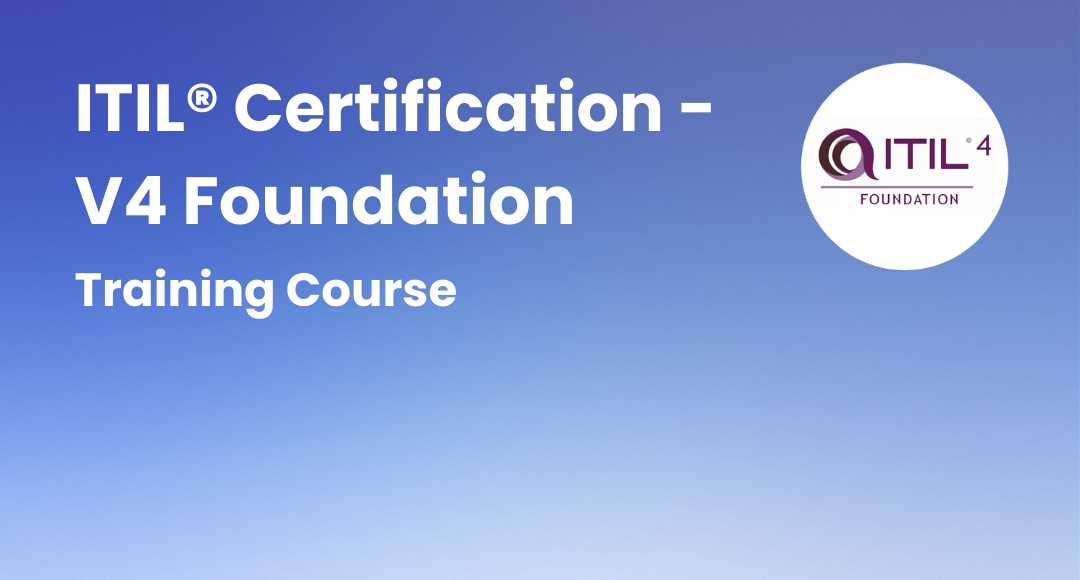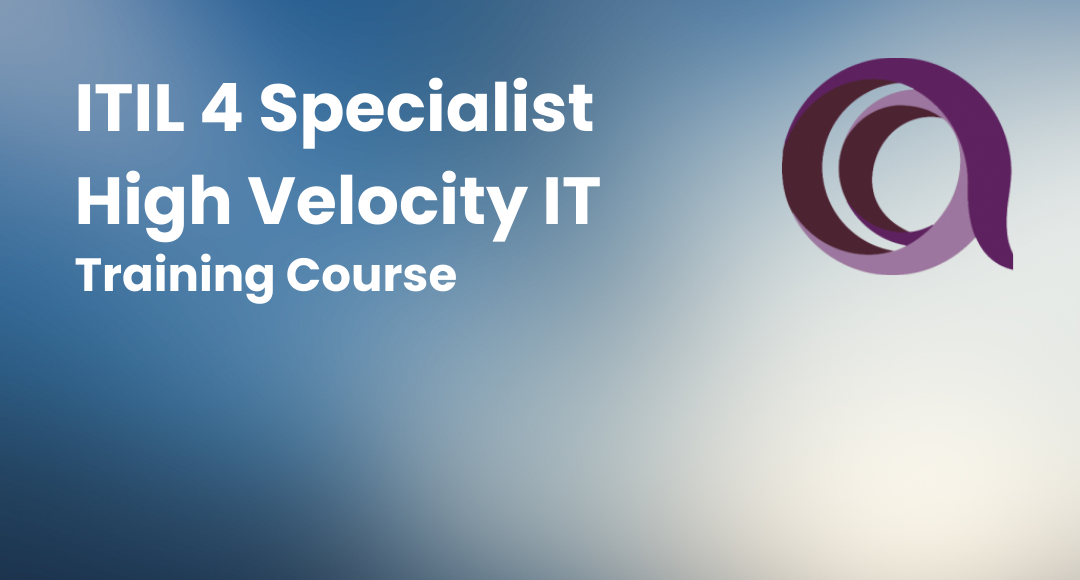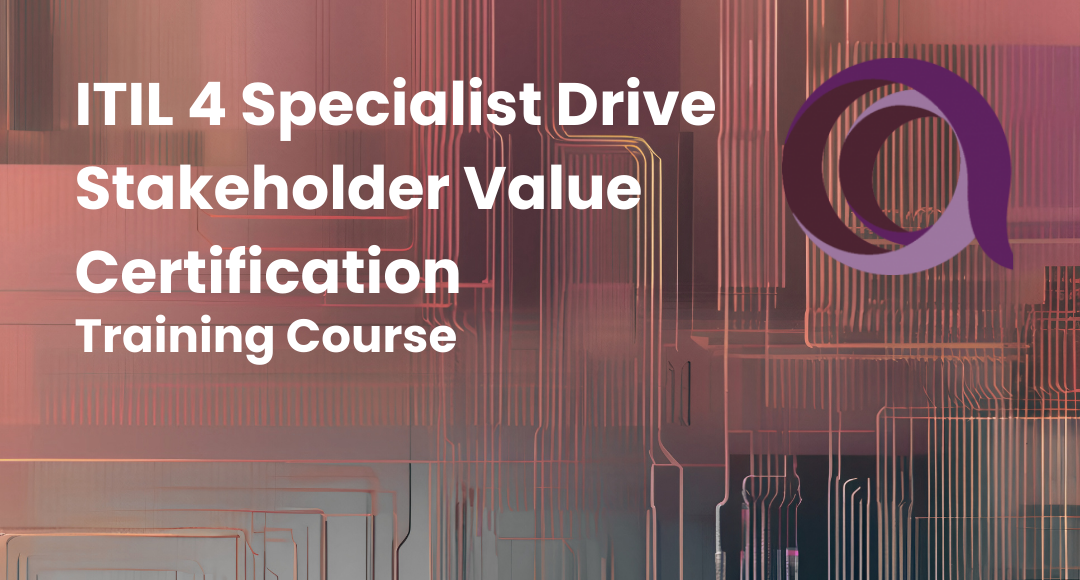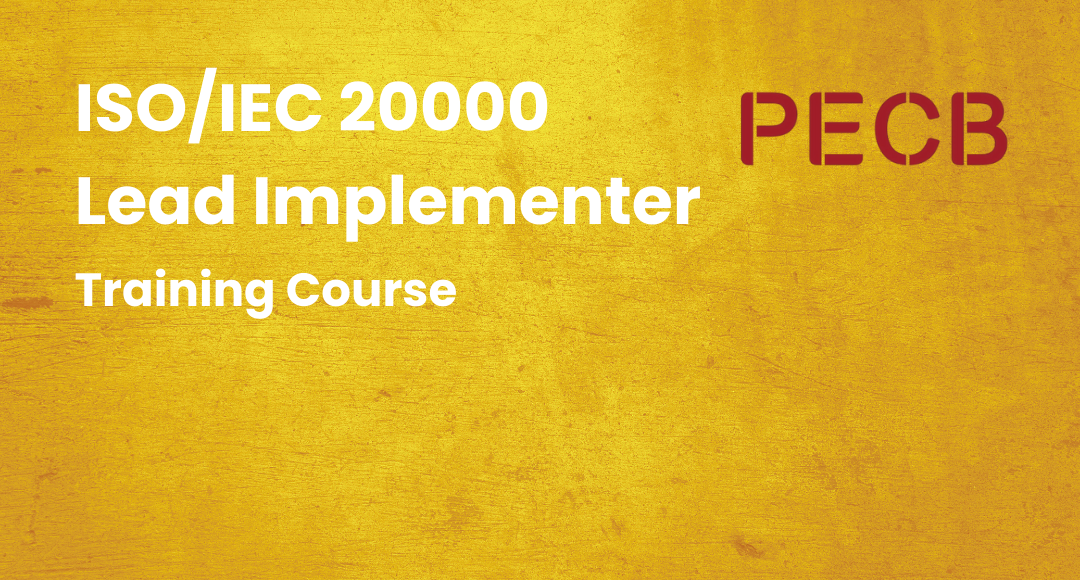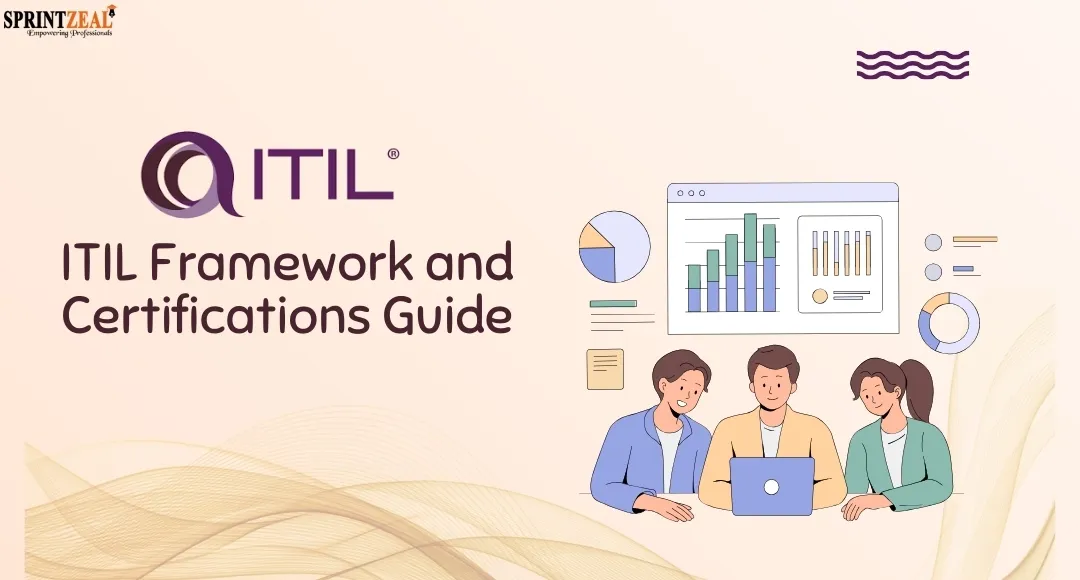Well Explained : The IT Service Management and ITSM Design, Concepts and its Benefits
-
 By Melissa
By Melissa - Published on Jan 9 2023

Table of Contents
- Everything about IT Service Management
- History of ITSM
- Benefits reaped by the organizations upon the successful integration of ITSM in their management:
- What is ITSM designing?
- Processes of ITSM Design
- Concepts Involved in ITSM Design
- What is the process of ITSM?
- What are the ITSM software and tools?
- Summary:
Everything about IT Service Management
The IT industry is rising as one of the fastest-developing enterprises. The degree and administrations of ITIL Frameworks are tremendous, and you have to saddle up to that possibility to move up the stepping stool of accomplishment in your profession.
IT Service Management, or ITSM, is engaged with making, overseeing, and supporting the different IT administrations offered by IT organizations. The IT organizations make sure that they possess the complete solution to their problems on various creations of IT-related bug and queries, which may cause significant damage to the networking system.
While the term management in IT refers to the complete course of change in the management structure of the IT systems in the ecosystem, this management is necessary to oversee the various creation and preservation of the system structure while maintaining the integrity of the organization. This system is present to support the various aspects of the IT industries.
In case you are proficient in IT, you should be ready. New patterns are on the ascent, and you should be watching out to remain in front of others. In plain words, IT administration contains all the things required to run an IT organization.
It may incorporate making and overseeing applications and equipment, taking care of IT issues, and taking into account clients' necessities after your item has been propelled.
IT Service Management is materially improved after the venture supervisory service teams have carried out their responsibilities effectively and responsibly.
Following up on the administrations gave by your association is extremely significant. The IT sector has been continuously developing its branches into various sectors. Therefore, the complete responsibility for maintaining such a huge ecosystem lies in the hands of the IT Service Management Professionals.
The IT sectors require constant maintenance from the various bugs, while IT Service Management is not just in maintenance, but it is responsible for all around the creation of various IT related solutions.
ITSM is commonly understood as Information Technology Service Management, this process involves everything there is to the IT sector but is commonly conceptualized as just IT service support. We agree that it provides the necessary IT supports, but this service rendered goes beyond that conception.
Therefore, according to common knowledge, it is known that IT Service Management provides the necessary technology and software-related support to any organization that is currently undertaking this action to implement it under its management belt.
The IT Service Management system is more considered to be oriented towards the technical aspects of the IT ecosystem, which may include Network Management and IT systems management.
These components are considered the backbone of the IT sector, and IT Service Management is responsible for the wellbeing of their various aspects.
History of ITSM
IT Service Management is said to be a relatively new methodology, as it has completely changed the various aspects of the traditional IT management services. IT Service Management was developed on the foundational bricks of ITIL, while this evolved into an all-around service and management system.
This methodology has proven successful in not only the creation of a sustainable environment in which the IT professionals can stay and help the industry grow but also has helped in bringing the customer and the manufacturer closer and integrated them into a union of harmony.
IT Service Management is different from the traditional framework of the IT structure, this fact can be agreed, but IT Service Management has been proved to have a better-centralized working system that is much more effective in terms of the traditional framework.
At the same time, this system is capable of the prevention of data and networks rather than firefighting skills of the traditional system. The IT Service Management system was developed in order to synthesize business perspectives while being service-oriented in nature.
Benefits reaped by the organizations upon the successful integration of ITSM in their management:

1) Expanded Automation for profitability:
This system has been keeping the IT systems afloat for a long time and helping it gain revenue from software generation. From AI to complex programming, everything is adding to mechanization and improving our lives.
This incorporates the execution of innovative investigative apparatuses for a more noteworthy effect on associations conveying IT administrations and management. It will, at last, lead to expanded profitability for your association.
For instance, you can utilize Chat-bots to connect with the clients and assist them with settling their issues at the most punctual in this manner, diminishing your outstanding burden. All these innovative ideas can be turned into your favor while you implement the ITSM trends and methods in your organization.
2) Client Experience Matters:
The IT Service Management (ITSM) has been tweaking its guidelines and goals to upgrade the general client experience and be able to satisfy the needs and demands. This is a significant angle that has been taken into thoughtful consideration by significant IT associations.
Representatives are being shown the estimations of clients and are being prepared to take into account their requirements successfully. This helps in building a more harmonious and trustworthy relationship with the clients.
3) Takes fundamental rules from agile methodology:
The greater part of the associations is embracing Agile Methodology to streamline their administration and management to board the framework and keep a superior to track progress and monitor the data.
The coordinated strategy includes separating of a bigger venture into littler scrums or portions and micromanaging them. This is appropriate for a wide assortment of territories and has no constraints. Incorporating Agile and DevOps is the way to ace the Agile Approach while helping the organization to implement ITSM.
4) Acting naturally and support to IT experts:
The utilization of self-administration has been well known among IT experts. Mechanization, along with self-administration, is being utilized with ITSM devices and systems to expand availability.
This is particularly significant if your company has a wide client base to follow up on in the process of IT Service Management. Depending less on others will lessen your outstanding burden and help the company grow and prosper.
5) More capacity to IT support
IT support is important in regions like the secret word on the board, pay guidelines, and server issues. On the off chance that you take on IT support for these issues, you will have the option to spare labor for increasingly significant and basic occupations.
In tech-driven regions like San Francisco, companies face rapidly evolving digital demands and infrastructure challenges. Partnering with a reliable IT service ensures they receive prompt, tailored support to effectively address these local business needs.
Decreasing the impedance of people to an exposed least in territories where IT can supplant them has been a drifting ITSM objective. This does not imply that you can totally get rid of human help.
This target has been defined, and, remembering the remaining burden that a normal IT professional attempts what's more; endeavors have been made to diminish that outstanding task.
6) Killing Security dangers with AI
Digital security is a worry for all associations. Without a strong and idiot-proof security framework set up, you can't manage digital assaults. Simulated intelligence causes you to identify any sort of danger at the earliest possible moment and subsequently keeps you from getting caught in something significant.
Recognizing the example of an assault is a simple undertaking for AI frameworks, and they can advise you on the off chance that security has been penetrated. Protecting your frameworks from aggressors will keep your data safe and permit you to concentrate more on profitability.
7) Deal with your workers
The IT business is massively subject to its workers. You can't stand to treat your workers badly, as that would prompt extraordinary circumstances. A cheerful workforce conveys better outcomes and builds efficiency. Work environments determine how successful your business venture is going to be.
A positive work environment where the workers are happy and motivated will lead to a more successful organization. If you wish to improve the work environment of your company, you need to take care of the wellbeing of your workers.
The major driving force for workers is motivation. Keeping your workers motivated is the best way to make them work harder and better.
8) Continuous improvements
The key concept of IT Service Management is continuous improvement. You can become better at what you are doing if you strive to improve your work processes.
Upgrading the IT infrastructure to make it compatible with current standards is one way of ensuring that your company stays profitable. Encourage your teams to share their insights and help your organization improve in every way.
You can increase your efficiency by removing the loopholes in your design. IT Service Management lets you identify the loopholes and rectify them in time so that you will not face any major crisis.
9) Decreased costs
The main reason why IT Service Management is mandatory for business processes is that it brings down costs and improves the profitability of companies. All the aspects of IT Service Management lead to a reduction in overall costs.
It would allow you to serve your customers better by offering those services at reasonable prices. You will also be able to understand their requirements in a better way and apply the principles of management to solve business issues.
Explore Intermediate ITIL Certification Levels:
ITIL 4 Managing Professional Transition
ITIL 4 Specialist: Create, Deliver and Support
ITIL 4 Specialist: High Velocity
ITIL 4 Strategist - Direct, Plan and Improve
ITIL 4 Specialist Drive Stake Holder Value
What is ITSM designing?
Service design is an important part of any organization and helps them to design their products in advance and test them in simulated conditions. By doing so, they will have a basic idea about applying the service in real life.
It will also enable them to find out if there are any faults with the design. Early detection of faults will enable them to prevent any major disaster when the service is made available to customers.
IT Service Management designing is one of the five lifecycle stages of the ITIL management process and focuses on creating better services for organizations.
Designing and developing a new product or service takes a lot of effort. It cannot be done singlehandedly and requires equal effort from all the team members. Managing a large project can be disastrous if you don't take feedback from others.
Applying Smarter IT Service Management Design methods into your work will enable you to constantly monitor and guide your team by using an effective IT Service Management framework. There are five lifecycle stages of ITIL, and among them, ITSM Service Design plays a key role in shaping the projects from an early stage.
Processes of ITSM Design
1) Creating an achievable goal for the service.
2) Designing and guide lining the objectives of the service.
3) Creating the budget by taking into consideration the resources and funds available.
4) Adopting a profitable and fool-proof design.
5) Giving roles to different team members and giving them specific tasks.
6) Scrutinizing the work and ensuring timely delivery of products.
7) Assessing the reception of the product or service by customers and providing post-launch assistance.
Concepts Involved in ITSM Design
ITSM Design is a stage that connects the strategies planned in the previous stages with exceptional designs that need to be implemented. This requires both creativity and productivity. There are certain concepts involved with design that play an important role in designing a service.

1) Documenting.
This is an important area of ITSM service designing. It involves cataloging details about the company, its line of services, helpline numbers, emails, contact addresses, and other relevant information.
You can include this information in a brochure that would help your customers to assess your organization within a few minutes.
Continuous documenting is the most important thing while maintaining a catalog. A well-maintained catalog can leave a lasting impression in the minds of the customers.
2) Availability and fulfilling requests.
Availability plays a crucial role in service designing. Availability refers to the gap created in the market that needs to be filled up by your organization. The Availability Management Process can be applied to the service designing process to help an organization fulfill the requirements of the customers.
3) Managing Capacity.
Capacity Management is crucial for every organization and deals with assessing the capacity of the services being designed in terms of utility and performance. Not taking care of the capacity of your services will lead to confusion in the later stages and a reduction in profits.
Moreover, it will help you provide your customers with accurate details about your services. You will be able to tweak the data according to customer demands to make it more visible in the market.
4) Continuous assessment and Service Level Management.
Service Level Management, or SLM, has been designed to make sure that each stage of the service design process is continuously evaluated for faults and risks. This would enable you to identify an effect in its initial stages. Continuous evaluation is important for any organization and helps you keep the end goal in mind.
5) Information Security Management
Your organization's information should be fiercely guarded by you. Security threats are real and must be taken into account. A single attack by hackers can greatly damage your company's profitability and make your service vulnerable in the market.
Security threats are usually carried out by competitors who aim to steal valuable data from your company's services. It is imperative to invest more in cybersecurity to protect your customer's data from getting stolen.
There have been plenty of cases in which the information of users was compromised. This led to a decrease in the value of the company and a loss in its customer base.
What is the process of ITSM?
The principles of ITIL, or Information Technology Infrastructure Library, are mainly responsible for up-keeping the practices of ITSM. IT Service Management is one of the core areas of the five lifecycle stages of ITIL. If you are not aware, ITIL is the leading management process for all IT companies.
It helps them manage their processes and handle their infrastructure in a better way. It provides you with complete information on terminologies associated with IT Service Management.
So, to incorporate the IT Service Management principles into your business processes, you need to utilize ITIL. But what are IT Service Management processes?
IT Service Management processes or practices are the guidelines that determine how you should implement ITSM in your business processes. As of now, there are a total of 34 IT Service Management practices or processes.
These 34 processes are listed in the principles of ITIL and are an essential part of every IT company. If you wish to understand the processes of IT Service Management, you need to go through the principles of ITIL to get a better idea.
Modern technologies require greater incorporation of the IT Service Management principles in business processes. So, it would help if you had a look at the various IT Service Management processes. Here are some of the main ITSM processes.
1) Managing Service requests
Service requests are the most crucial procedures in the business management process. You might ask what service requests are. When you buy something online, you send a request for the dispatch of the item. Your request is received by the company's systems, which forward the request to the appropriate authorities.
Upon receiving the request, the personal creates a chain of actions that ultimately end in you receiving the product. That is a service request in a nutshell.
Service request management is necessary if you want to keep your business functioning properly. Software enhancements are a part of managing service requests in a better way. Your infrastructure needs to be strong enough to process the requests and handle them properly.
2) Managing resources
Resource management is another important IT Service Management process. Your resources define how well you will fare in the future. Plan your processes in such a way that you will make optimum use of your resources. It is best to identify your resources and then analyze your requirements.
Over waste frequently results in additional loss. If you can manage your resources in the right way, it will lead to increased profits. The main reason why resources matter so much is that they are the things that define your projects.
Here, resources don't only mean financial resources. Human resources are also an integral part of IT Service Management. You need to identify talent and hone their skills for your organization's advantage.
Human resource planning is one of the main areas that companies neglect and fall behind in. If you handle your human resources in the right way, you will be able to ensure increased profits.
3) Managing assets
Your assets might be more or fewer, depending on the size of your organization, but you need to manage your assets in the right way to make the most out of them. Valuable items need the topmost priority, while less valuable items should be kept for last.
When you get your assets right, you will be able to upgrade and maintain them to your advantage. Assets can be categorized as tangible and intangible.
Tangible assets are the ones that you are able to view directly, whereas the intangible assets are the ones that are not comprehensible but play an important role in determining the progress of your organization.
4) Managing events
Unplanned events can pop up at any time during the regular business process. It can cause hindrance to your regular work processes and pile you up with huge burdens. There are many possibilities for a project to fail.
The increased risks are the main reason behind the failure of IT projects. In an IT project, the main focus should be on eliminating risks. Advanced modernization often fuels the growth of many loopholes within an organization's framework.
These loopholes need to be eliminated at the earliest possible time so that you can consider revising and upgrading them. It is one of the reasons why many IT companies are opting for the latest IT Service Management principles to manage their processes in an efficient manner.
5) Managing difficulties
Problems and difficulties arise with every business project. Be it a large company or a small startup, and there will be many difficulties. The IT Service Management processes allow companies to eliminate difficulties by going over them properly.
Identifying the risk factors and eliminating them at the earliest will help you to be efficient in your work processes. Problem management is not just about managing the evident difficulties. It is also about identifying the underlying problems and eliminating them so that a process will be completely free from defects.
Root-cause analysis is given much importance during the design of an IT framework. The Root Cause Analysis enables companies to find out the exact reason behind the failure of an IT project. By doing so, they can help to eradicate the complete problem from its roots. It is highly beneficial, as you would be able to create projects with zero risks.
Minimal defects can be eliminated later easily. It is a point of concern among many organizations that IT Service Management will not help them solve problems. But that is not true. IT Service Management will allow you to identify the problems and solve them as well.
6) Adapting to changes.
When you quickly adapt to changes, you have a better chance of survival. If you do not comply with the current standards, your business will fall behind. The only way to stay on top of your game is to identify current business trends and shape your businesses accordingly.
The organizations that are quick to adopt the latest changes in technology always emerge as stronger and more resilient. The increased flexibility that IT Service Management provides you will be helpful in creating effective frameworks for the complete adoption of the latest advancements in technology.
You need to understand that with the right amount of planning, you will be able to handle any kind of change. There are positive changes and negative changes.
The positive changes will drive a company towards success, while the negative changes will hamper its growth. Identifying positive changes and dealing with the negative ones is the key to surviving in the tough competition.

What are the ITSM software and tools?
To design and implement an IT Service Management framework, you need to adopt efficient tools and software. These tools and software will make the ITSM process simpler for you and help you to adopt them into your business processes even if you are not acquainted with the different terminologies.
There are a lot of tools that can be used with the IT Service Management processes. These tools are standalone applications, as well as a set of different techniques.
Selecting the right software and tool for your network is important, as it will allow you to understand the ITSM framework in an effective manner. The IT Service Management software will make the business processes easier for you.
You will be able to implement the IT Service Management principles without any difficulty, as the framework will be pre-built. All you have to do is integrate the software into your business processes so that you will get a seamless experience.
The main benefit of using IT Service Management tools is that they are easy to use. Apart from that, it also enables efficient collaboration between various platforms. You will be able to solve issues faster if you resort to effective tools and techniques.
The ITSM framework can be adapted to your needs as the tools are flexible enough. Flexibility is one of the key attributes of IT Service Management software. It makes companies increasingly flexible and prevents them from becoming rigid.
Self-service portals are the latest things in the field of ITSM. The self-service portals will allow you to engage your customers and take their feedback on certain services.
The increased engagement will make the users happy and satisfied with your services.
Summary:
IT Service Management is an integral part of designing efficient software and IT infrastructure. It is the best way to implement the principles of ITIL into your business projects. IT organizations need to implement IT Service Management into their work processes to reap in the benefits of modernization.
Explore training for ITIL certification levels and get certified.
Sprintzeal is an ATO (Authorized Training Partner) of AXELOS, offering ITIL training for all ITIL certification levels online, live online and classroom modes of study. Reach us at Click Here or chat with our expert to get full details now.
Subscribe to our Newsletters
Popular Programs
ITIL 4 Specialist: Create, Deliver and Support
Live Virtual Training
- 4.8 (74 + Ratings)
- 70k + Learners
ITIL 4 Specialist Drive Stakeholder Value Certification
Live Virtual Training
- 4.1 (82 + Ratings)
- 3k + Learners
Trending Posts
ITIL Framework and Certifications Guide 2026
Last updated on Oct 31 2022
A Guide to Enterprise Asset Management
Last updated on Jan 12 2024
ITIL Framework Explained (Updated)
Last updated on Mar 20 2025
What is ITIL – Information Technology Infrastructure Library jobs and Certification Benefits
Last updated on Apr 19 2024
ServiceNow - What is it, Fundamentals And Features
Last updated on Dec 22 2022
Axelos and TSO launch MSP Foundation app
Last updated on Feb 18 2022
Categories
- Other 71
- Agile Management 50
- Cloud Computing 57
- Project Management 174
- Big Data 67
- Business Management 88
- Digital Marketing 80
- IT Service Management 29
- Programming Language 59
- AI and Machine Learning 84
- IT Security 112
- Quality Management 78
- IT Hardware and Networking 26
- Microsoft Program 5
- Workplace Skill Building 13
- Risk Management 9
- Information Security 8
- Leadership and Management 9
- Corporate Training and Development 1
Trending Now
ITIL Framework and Certifications Guide 2026
ArticleTop 25 ITIL Interview Questions and Answers in 2026
ArticleWhat is ITIL – Information Technology Infrastructure Library jobs and Certification Benefits
ArticleHow to become a certified ITIL Expert in 2026
ArticleIs ITIL a fit for your organization's culture?
ArticleITIL Framework Explained (Updated)
ArticleTOP 10 BENEFITS OF TOGAF CERTIFICATION IN ENTERPRISE ARCHITECTURE
ArticleThe Importance of ITIL certification and scope for career growth
ArticleITIL Certification Levels and Job Scope
ArticleAll about ITIL 4 practices – Updates, Service Types and Benefits
ArticleITIL Strategist Certification Overview And Career Path
ArticleEnterprise Architect Interview Questions and Answers 2026
ArticleMost Asked Release Manager Interview Questions and Answers 2026
ArticleHow to Become a Release Manager
ArticleITIL Processes List – 26 ITIL Processes and 5 ITIL Service Lifecycle Stages
ArticleAxelos and TSO launch MSP Foundation app
ArticleITIL Problem Management Guide for Beginners
ArticleITIL Guiding Principles Explained
ArticleWhat is ServiceNow - A Beginner's Guide
ArticleServiceNow - What is it, Fundamentals And Features
ArticleA Guide to Enterprise Asset Management
ArticleTop 5 IT Service Management Tools in 2026
ArticleService Value System in ITIL 4 Explained in Detail
ArticleThe ITIL 4 Service Desk Guide – Importance and Types
ArticleWhat Is IT Mapping?—An Essential Guide
ArticleTop 6 ITSM best practices
ArticleESM vs ITSM - Key Differences Explained
ArticleTop Incident Manager Interview Questions and Answers 2026
Article
